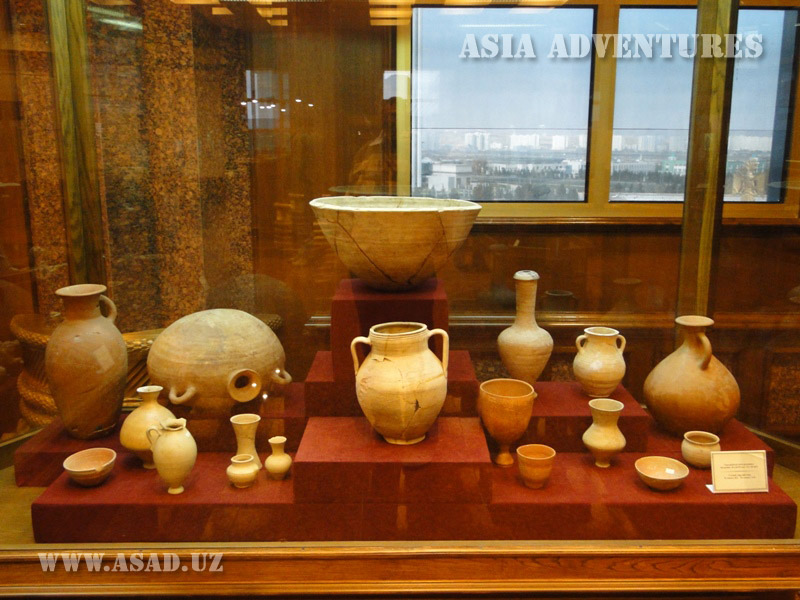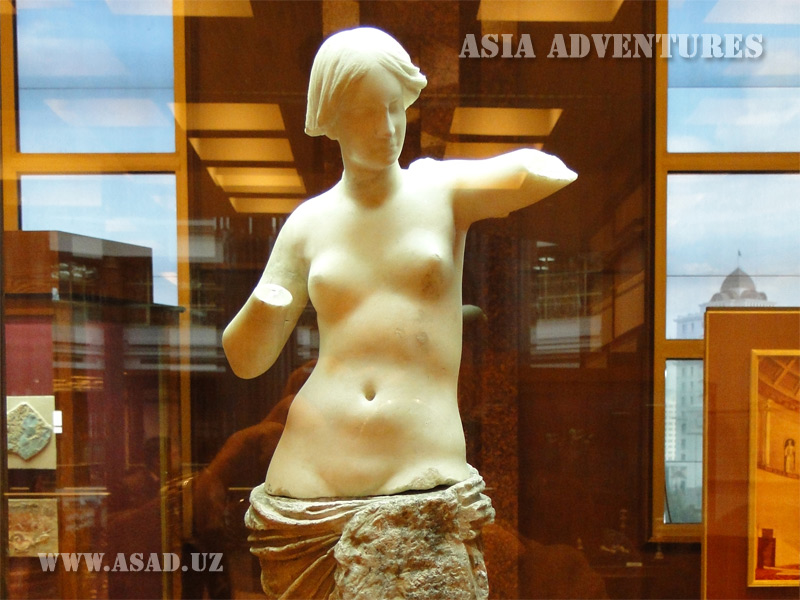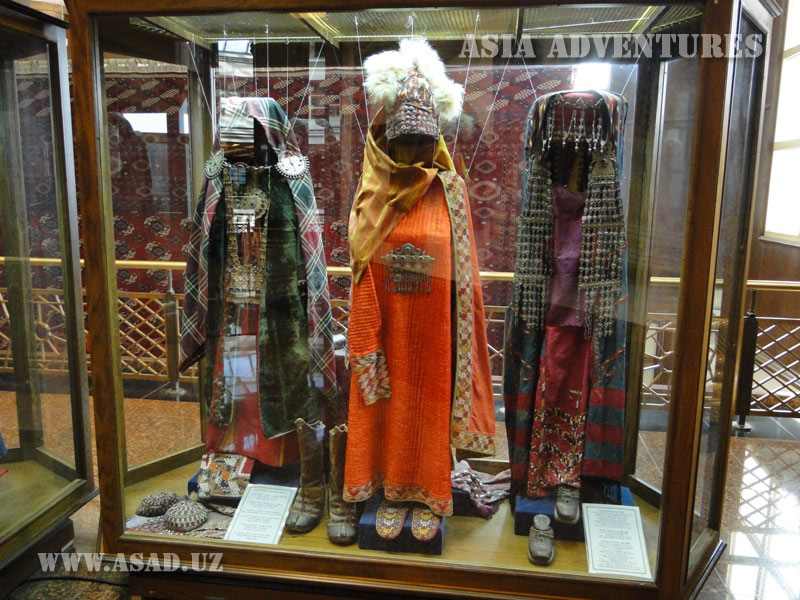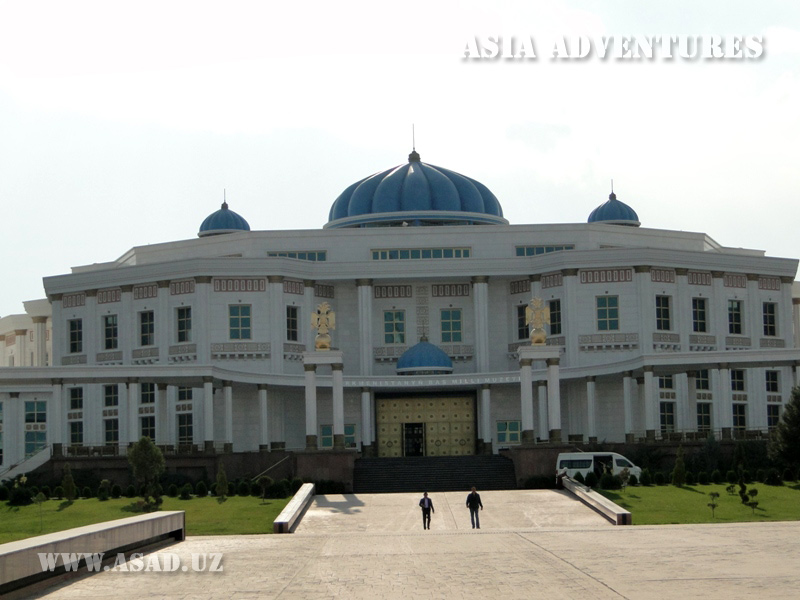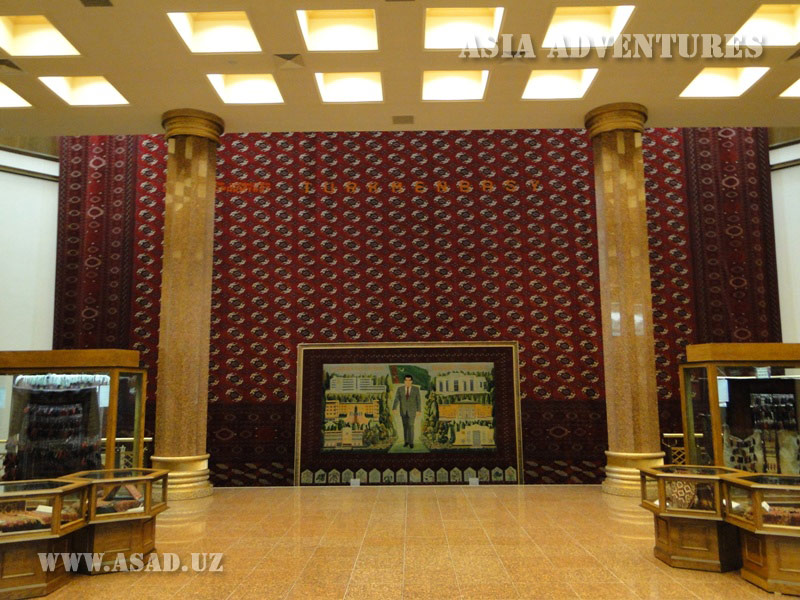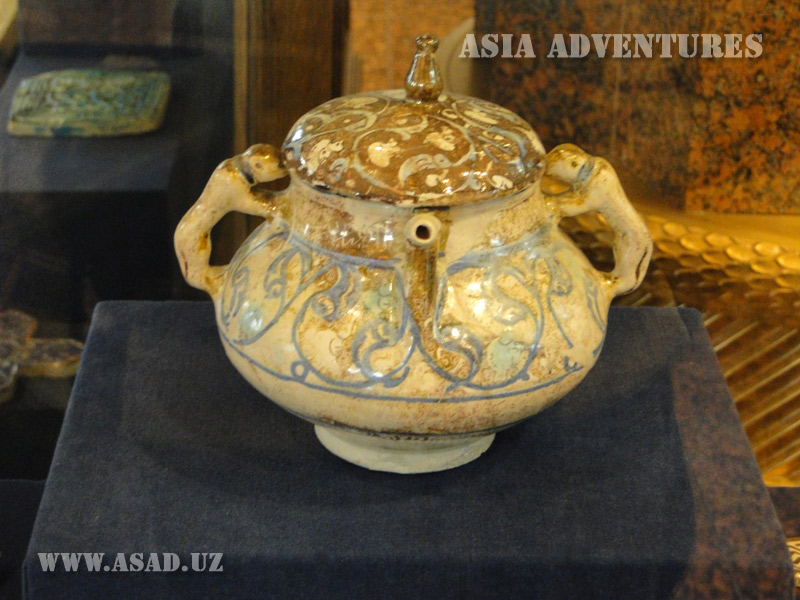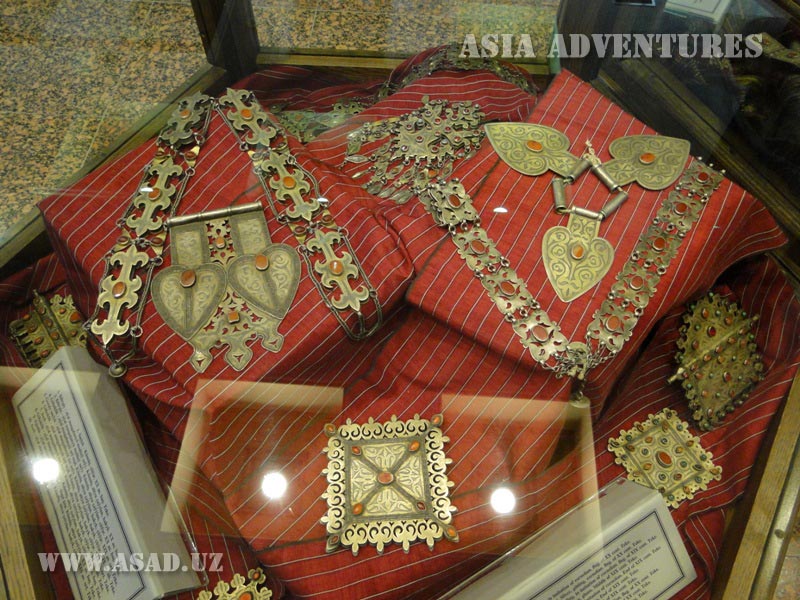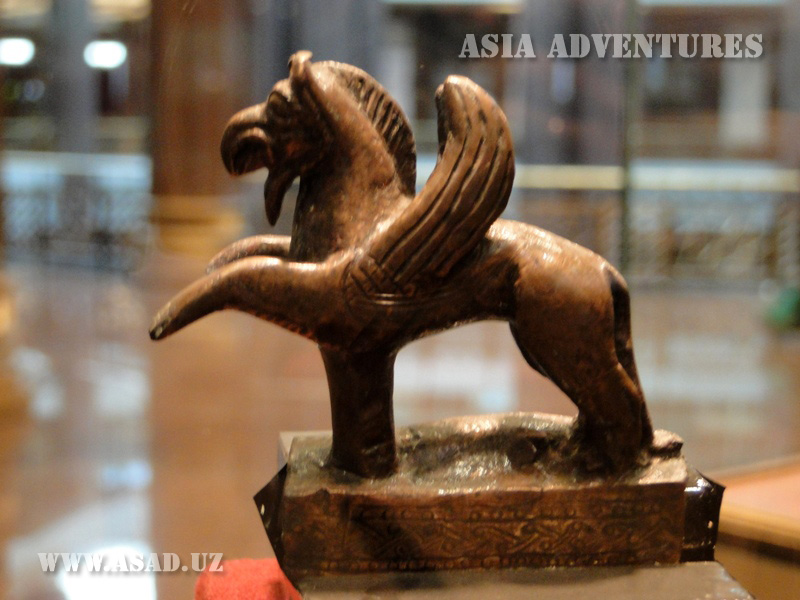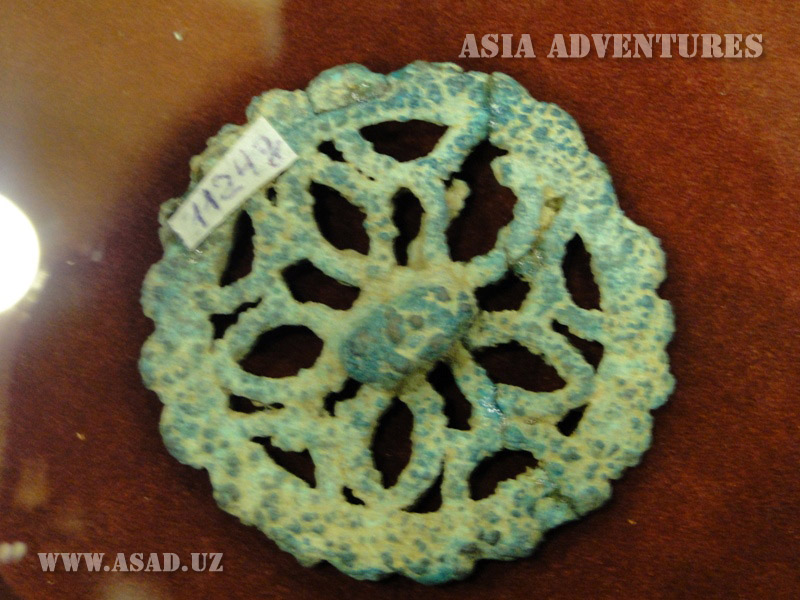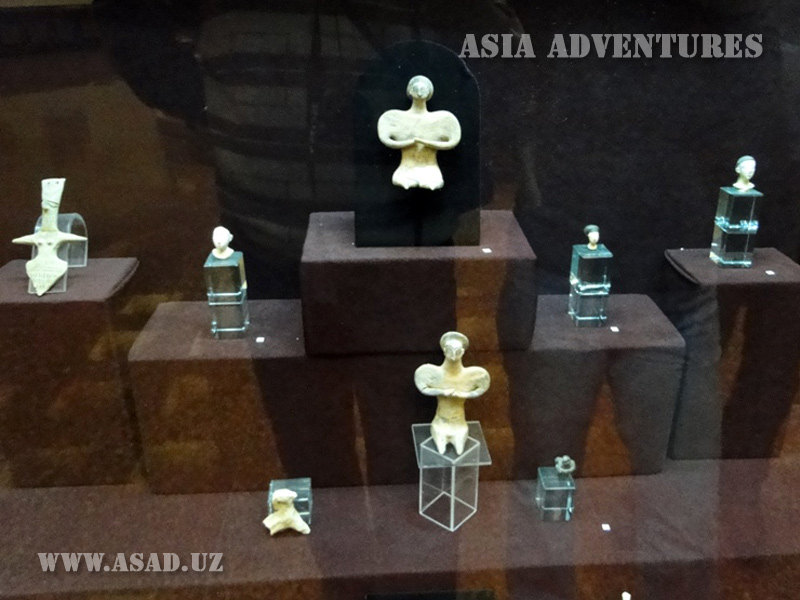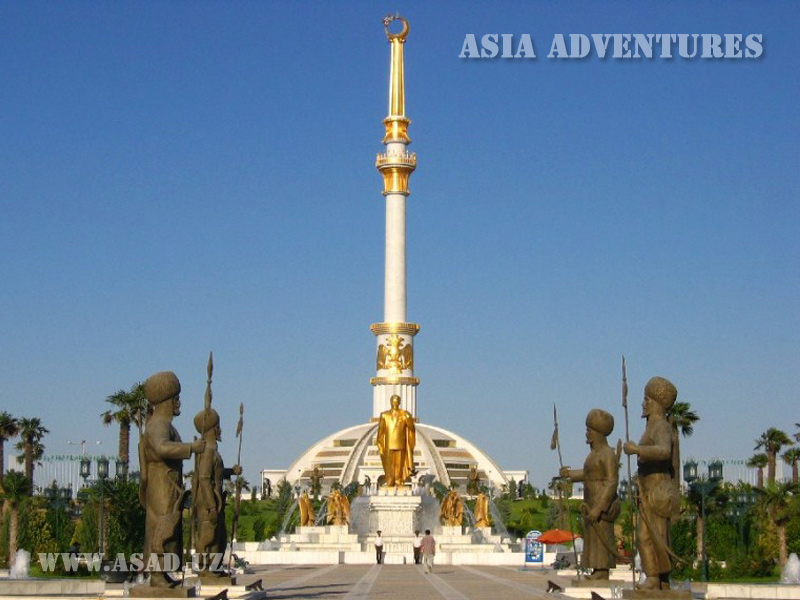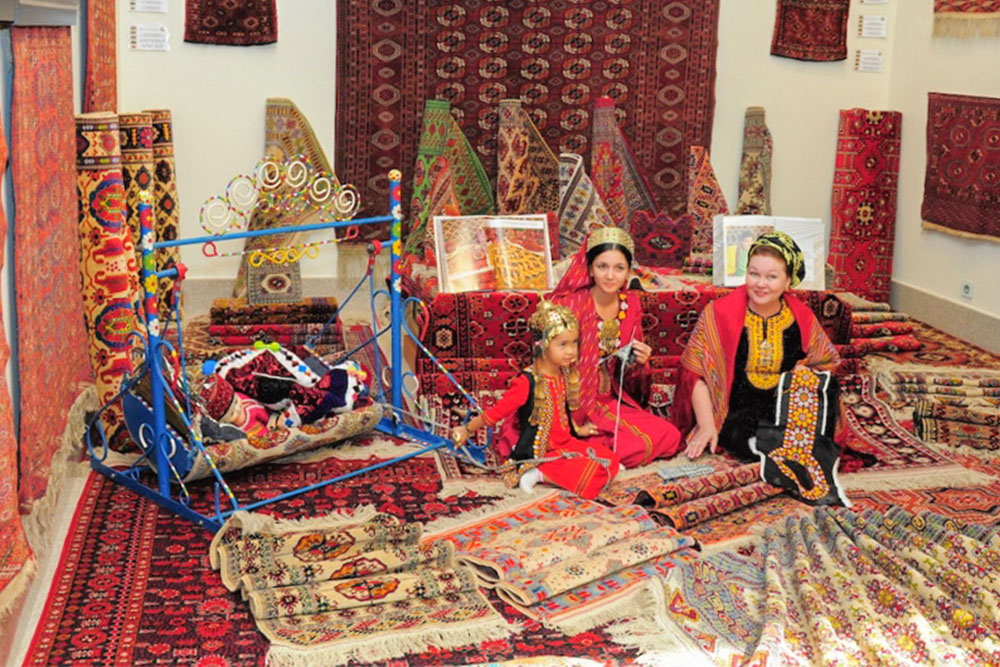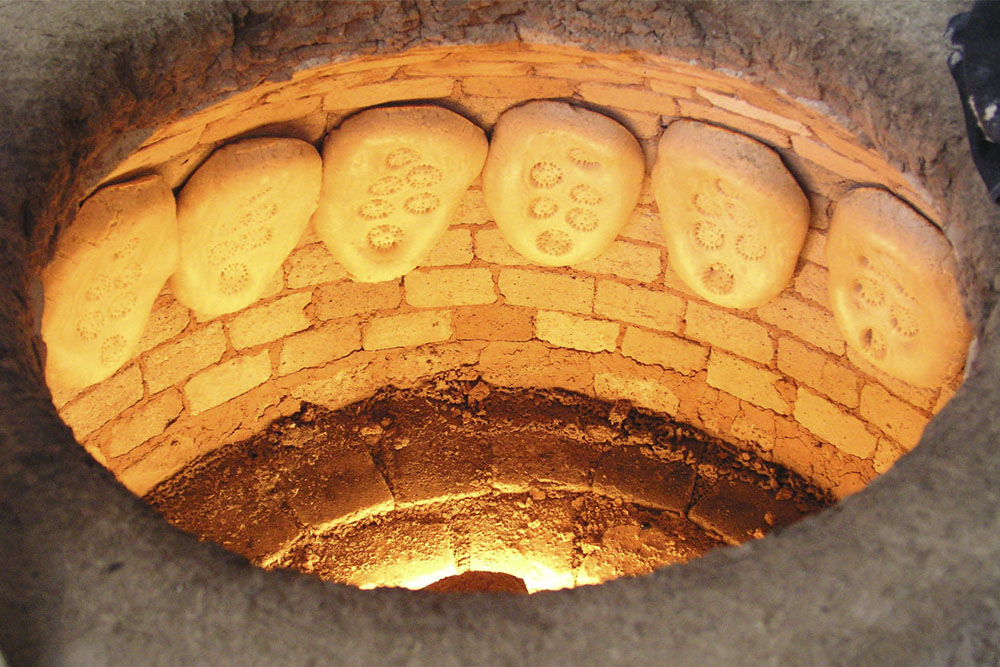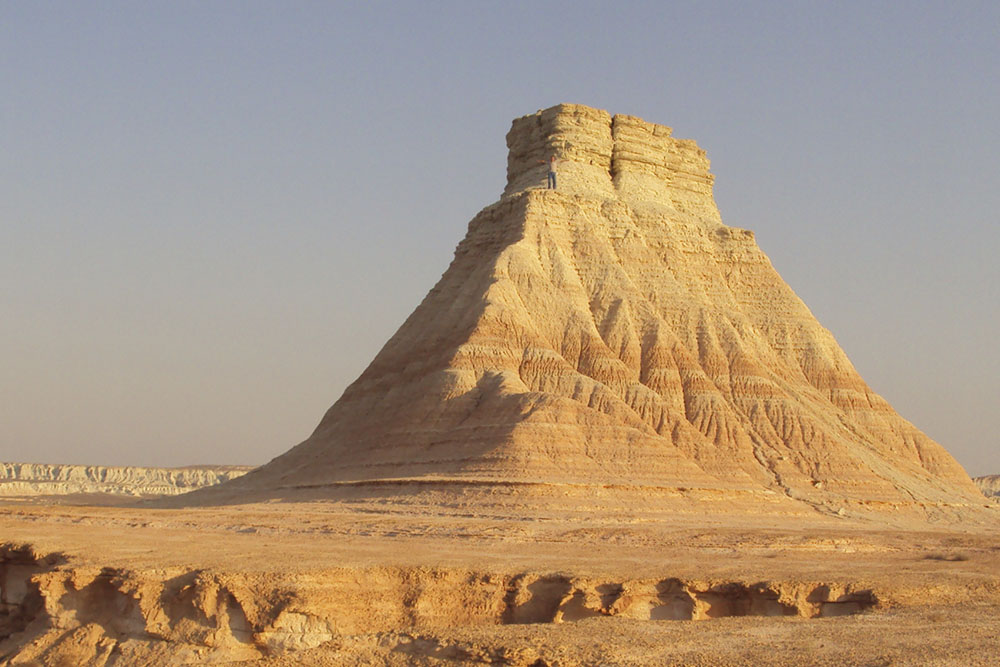The adjacent territory (which is 105,000 square meters) has flower beds and an ensemble of three original fountains and a colonnade topped with huge gilded statues of winged horses. The flag of Turkmenistan (35x50m), the largest flag in the world, is fluttering here on a huge 130-meter flagpole. In the evening and at night, special lighting gives a special flavor to the entire museum complex.
The Central Historical Museum has 9 halls dedicated to certain periods of the country's history or certain topics.
The Hall of Ancient History presents a collection of flint working tools from the Mesolithic era (50,000 BC). These tools were used by primitive people in Western Turkmenistan. In the same hall, you can see samples of Neolithic ceramics belonging to the first public settlements along the northern slopes of Kopet Dagh. Objects made of clay and metal, semi-precious stones and ceramic tiles indicate a high level of development of early agricultural civilizations - Jeitun, Altyn - Depe, Namzga-Depe, Anau-Depe, etc.
An honorable place in the Hall of Ancient History is occupied by the exposition of Margiana, the center of a unique Bronze Age civilization that archaeologists discovered in the Kara-Kum desert to the north of the modern city of Bayram Ali. Ceramic dishes and ritual vessels, the remains of ancient chariots, clay figurines of people and animals, unique bronze seals, gold jewelry, reconstructed models of ancient settlements and palaces place Margiana among the oldest civilizations in the world – Egyptian, Chinese, Indian, Mesopotamian.
The Hall of Ancient History presents a unique collection of ritual rhytons - ivory vessels in the form of horns, decorated with fine carvings, found during excavations in Old Nisa, the residence of the Parthian kings of the Arshakid dynasty. Marble statues, silver and gold jewelry were also found there, all famous examples of ancient art that are closely related to ancient Greek traditions.
The hall of the Middle Ages presents a rich collection of ceramics, bas-reliefs, jewelry, coins of the medieval cities of Turkmenistan Merv, Kunya Urgench, Dehistan, etc.
A special place in the museum is given to the richest ethnographic collection. It contains household items, magnificent samples of women's clothing and original jewelry made of silver and precious stones, mainly wedding costumes, inlaid weapons and horse harness for the famous Turkmen Akhal-Teke horses. Well, a special place is occupied by the famous Turkmen carpets with unique patterns collected from all regions of Turkmenistan.
The Independence Hall shows the modern development of the country, and here you can also see the luxurious gifts given to the first president of Turkmenistan, Saparmurad Niyazov (Turkmenbashi) and donated by him to the museum.
The ten thematic sections of the Museum of the Presidents of Turkmenistan, based on documentary and photographic materials, present the latest history of the country, highlight the directions of its domestic and foreign policy, reforms in the economic, social and cultural spheres. A separate section is devoted to the life and work of President of Turkmenistan Gurbanguly Berdimuhamedov. Special showcases display the attributes of the inauguration of the head of state - a white koshma, a camel's hair sachak and a quiver with arrows, symbolizing the blessing of a good path, prosperity and wellbeing, unity and cohesion of the people for Turkmens since ancient times.
The thematic expositions of the Museum of Ethnography and Local Lore will tell visitors about the unique nature of Turkmenistan in all the diversity of its landscapes, flora and fauna, the richness of the earth's interior and rare geological finds, including casts of dinosaur footprints found in the Kugitang Mountains, an 820 kilogram meteorite that fell near Kunya Urgench in 1998.
There is also a gift shop in the museum.
As part of its socio-cultural and educational mission, the National Museum, like other museums of the country, working in close alliance with science, conducts active research and exhibition activities, searches for new forms of work with the museum audience, introduces modern techniques, creatively develops and improves. The National Museum provides advisory, organizational and methodological assistance to state and public museums in the country. The museum maintains close ties with colleagues from other countries, and during this time exhibitions of its exhibits have been organized in Iran, Germany, Holland, France, and Turkey.
Despite the rather large fee (about $ 25), visiting the museum will give you great pleasure.
The museum is open daily, except Tuesdays, from 10:00 to 17:00.

 Centralasia Adventures
+998781506280
Centralasia Adventures
+998781506280
28, Mukanna str.
Uzbekistan
Tashkent region
100070



